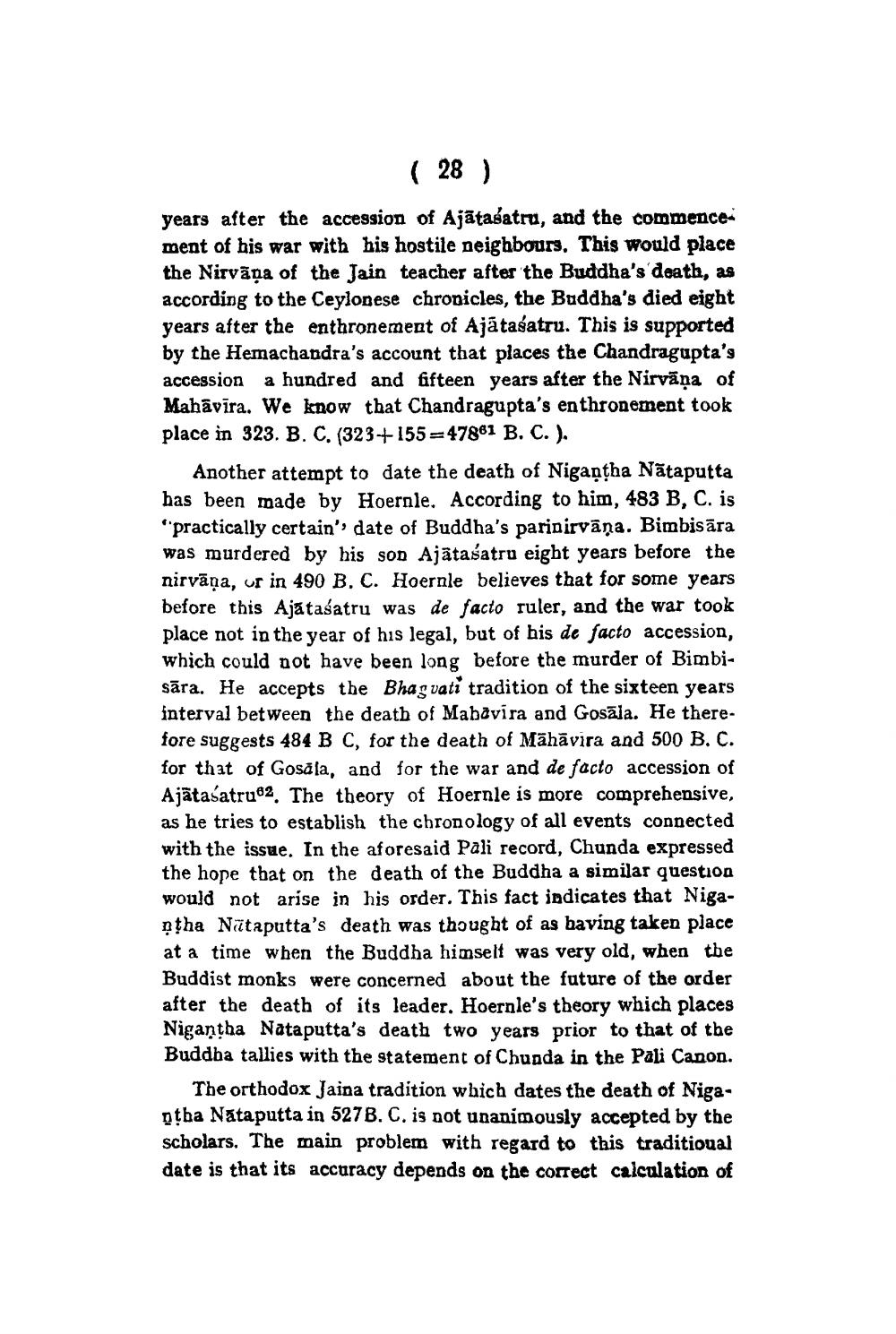________________
( 28 )
years after the accession of Ajatasatru, and the commencement of his war with his hostile neighbours. This would place the Nirvana of the Jain teacher after the Buddha's death, as according to the Ceylonese chronicles, the Buddha's died eight years after the enthronement of Ajatasatru. This is supported by the Hemachandra's account that places the Chandragupta's accession a hundred and fifteen years after the Nirvana of Mahavira. We know that Chandragupta's enthronement took place in 323. B. C. (323+155-47861 B. C.).
Another attempt to date the death of Nigantha Nataputta has been made by Hoernle. According to him, 483 B, C. is "practically certain" date of Buddha's parinirvana. Bimbisāra was murdered by his son Ajataśatru eight years before the nirvana, or in 490 B. C. Hoernle believes that for some years before this Ajataśatru was de facto ruler, and the war took place not in the year of his legal, but of his de facto accession, which could not have been long before the murder of Bimbisāra. He accepts the Bhagvati tradition of the sixteen years interval between the death of Mahavira and Gosala. He therefore suggests 484 B C, for the death of Mahavira and 500 B. C. for that of Gosala, and for the war and de facto accession of Ajätasatru 2. The theory of Hoernle is more comprehensive, as he tries to establish the chronology of all events connected with the issue. In the aforesaid Pali record, Chunda expressed the hope that on the death of the Buddha a similar question would not arise in his order. This fact indicates that Nigantha Nätaputta's death was thought of as having taken place at a time when the Buddha himself was very old, when the Buddist monks were concerned about the future of the order after the death of its leader. Hoernle's theory which places Nigantha Nataputta's death two years prior to that of the Buddha tallies with the statement of Chunda in the Pali Canon.
The orthodox Jaina tradition which dates the death of Nigantha Nataputta in 527B. C. is not unanimously accepted by the scholars. The main problem with regard to this traditional date is that its accuracy depends on the correct calculation of




